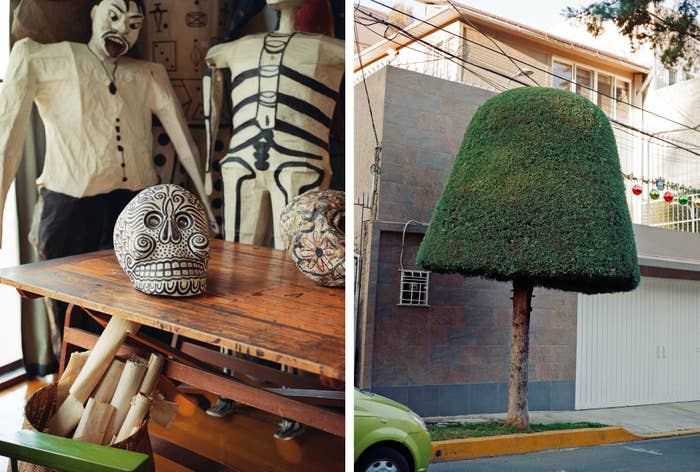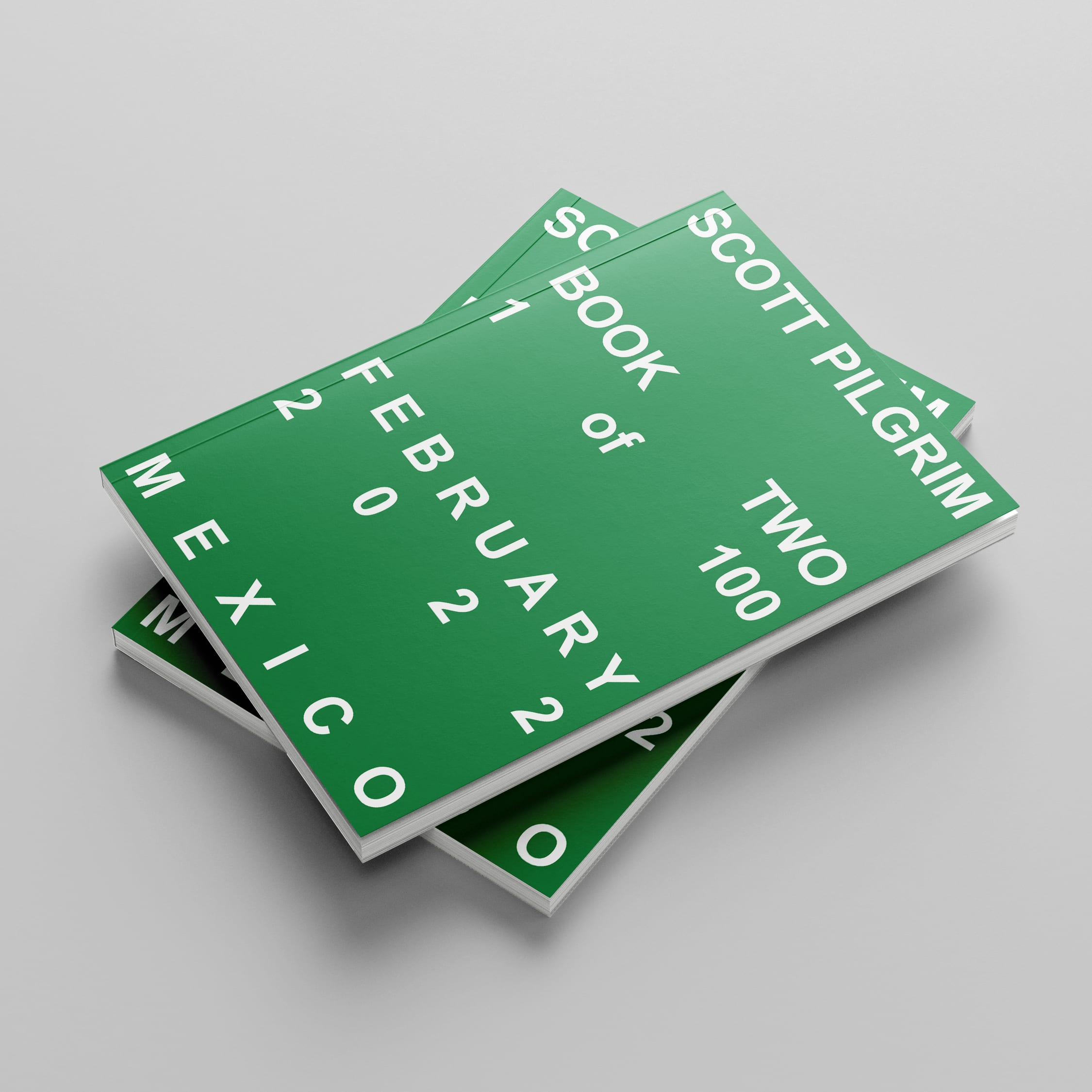
If you’ve been paying attention to culture in Canada over the past decade, you’ve most likely seen some of Scott Pilgrim’s work, even if you didn’t realize it. Maybe it was one of the many lookbooks he’s shot for buzzing Montreal-based brand Saintwoods; maybe you’ve seen one of the photos he’s snapped of Kaytranada; or maybe you’ve caught a glimpse of his creative direction for Cadence Weapon and Black Atlass. Taking a browse around his website or a scroll through his Instagram feed is a treat for the eyes—a carefully crafted world wherein each image encapsulates a moment, a memory, or a feeling. His fine-tuned ability to translate these intangibilities into a distinct creative vision has made him a trusted collaborator for brands and artists looking to make a visual impact with their work. In a world where creative directors and photographers are a dime a dozen, Scott Pilgrim stands out, and those who work with him know he can make them stand out too.
Over his 12 years in the creative field, Pilgrim has played many roles—photographer, director, designer—and last year added another to his resume: publisher. His first book, Los Angeles, “a modern take on the zine” which featured his photography and writings inspired by the city, was self-published in 2021 through his own PALINDROME imprint. The small run artist book press and gallery will provide a home for Pilgrim’s passions that are adjacent to his existing body of work including writing, research, and creating tangible goods, and will also give him the opportunity to platform other artists creating similar multidisciplinary art that lends itself well to print.
His second book is out now via PALINDROME, and this time Pilgrim takes us along for a month-long excursion to Mexico. The 192 pages are meticulously crafted, from the capture and curation of the lush images, to the accompanying research into the architecture and design culture of the cities. Titled Mexico (obviously), it’s an immersive experience that perfectly conveys the care and intention prevalent throughout Pilgrim’s entire body of work. (Oh, and it will really make you want to visit Mexico.)
We caught up with Scott to hear more about his trip, what’s on the horizon for PALINDROME, and why being a creative director is a bit like being a therapist. He also gave us an exclusive look inside the pages of Mexico, which is currently on sale here now.

Congrats on the release of Mexico. When traveling to Guadalajara and Mexico City, did you set out intending to make the book, or did it happen naturally later on?
It wasn’t the No. 1 intention of the trip but, yes absolutely. After I released the first book I wanted to put together a follow up ASAP, but I didn’t know where I would end up. I wasn’t sure if there was anywhere I could go for only a month that would inspire the amount of content needed to fill an entire book. With the first book Los Angeles, it took several trips over four-five years to put together what felt like enough work to show, and that book was only 76 pages long. Mexico comes in at 192 pages, so I guess it worked out. [Laughs.]
What surprised you most about spending a month in Mexico?
Probably how much there is to do—even though a month feels like a long time, it still seems like we barely scratched the surface.
Your book features dedicated chapters on architects Luis Barragán and Juan O’Gorman. What was the inspiration behind including these stories? Is there something particularly aspirational for you when it comes to these two?
I’ve been working on a few evolving themes surrounding the importance of houses and ownership in our society, and their “power” as inanimate objects.
That led me to researching both invasive and holistic approaches to architecture, and discovering the works of Barragán. I opened the previous book with a quote from him: “Don’t ask me about this building or that one, don’t look at what I do, see what I see.” With this in mind it seemed only right to follow up by visiting the homes he designed in Mexico.
Juan O’Gorman was actually an architect I discovered on the trip, he’s responsible for designing and building the Frida Kahlo & Diego Rivera Studio featured in the book. In including them I think it’s a contrast to the previous book which featured a look at architecture that has a jaded past. Places that present as overtly ominous or negative in their design—these spaces were designed with exactly the opposite in mind.
“The Internet, and the attention span you can expect out of a viewer, is so limited. I really didn’t see any space to add more meaning to my work online and in some sense I wanted [the book] to exist for the sake of existing.”
What are some of the most important things you learned between making your first book, Los Angeles, and this one?
Los Angeles was a compilation of work I had never intended to publish, so I think it definitely changed the way I photographed the most. Before when I was taking pictures, I was always thinking of them living online, being a short summary of a trip, existing as a one-off image etc. Because the whole purpose of the book was to say more, it inspires you to think of every photo supporting one another rather than standing alone. In that spirit it’s a lot easier to capture the feeling of a place without being limited by the platform you can share it on.

One thing that is consistent across both of your books is your project Dark Architecture, or Murder Houses. Can you tell us a bit about that and how it came to be a theme you decided to carry across your work?
Basically in 2016 I started researching different murder houses and famous houses in L.A. and visiting and documenting them. In some cases people still lived in them, others had stayed the same since the murders took place, some even were by famous architects. When I originally shared them I found it a bit intense to say “Murder House,” so when I posted them people responded like #goals, “omg dream house,” which was a bit funny. That reaction made me look at how the house is perceived, but also inspired me to make books in the first place, because clearly the work needed more context.
In addition to your own art, you have done creative direction for some pretty amazing artists including Black Atlass and Polaris Prize winner Cadence Weapon. For the unfamiliar, what goes into the creative direction for music artists?
It definitely depends from artist to artist but both of those projects are very hands-on, and in the best way. I’ve known both of them for a very long time so a lot of it is trusting the communication and a bit of interpretation of each other’s overall inspiration when listening to the music. I liken the process a bit to therapy even, in the sense that you’re discussing how something makes you feel and what that should be like visually. A kind of, pulling this thing out of you and realizing it on paper, that’s sometimes hard to put into words. The process of making music I think is very personal, and that makes trusting someone with representing you well also a very personal thing. It’s not all just photoshoots and branding and looking cool, it’s a lot of long conversations and trial and error.
Mexico is being released via PALINDROME, as was Los Angeles. What drove you to found PALINDROME as part of this process?
PALINDROME truly came out of my own experiences and expectations. I felt I wasn’t really finding the opportunities to be a part of something that represented what I wanted to see. Like I said before—the Internet, and the attention span you can expect out of a viewer, is so limited. I really didn’t see any space to add more meaning to my work online and in some sense I wanted it to exist for the sake of existing. There’s a history tied to the physical object, both past and future, and even the notion of sharing words with someone offline, in some sense that could become taboo eventually. That’s all a bit 1984, but to put it simply I wanted to create a platform for both myself and others, and put a spotlight on things I felt were missing from the discussion.
What are some of the things you hope to do with PALINDROME in the future?
Mostly putting out other people’s projects is my main focus right now. I have a few different books in the works, completely different from the releases so far. With those I’m hoping to expand the scope and feature not just art books but short stories, more writing in general, and more interviews on the site. I also have a newspaper in the works that I hope to do twice a year—one edition all art and no writing; the second all writing and minimal art. Truly there’s a million things I want to do. [Laughs.]

What are some cities that are on your travel wishlist?
I really want to see the extremes right now, so I’m looking to go to places like Anchorage, or there’s these sand dunes in Saskatchewan. Not sure why exactly—it may be because of the pandemic—but I really really want to be outside right now. Besides that, I do have interest in doing the next book in Italy, and potentially going to seven or eight different cities. Book No. 4, maybe I would do Singapore or Tokyo, but that’s aiming high. Singapore feels like it’s the closest to touching the future so it’s definitely high on the list.
And finally, we have to know—what was the best thing you ate while in Mexico?
I gotta shout out my guy Rico’s Tacos Londres, best taco stand hands down. Besides that I’d say Elly’s, Pujol, obviously, Sartoria for Italian, Mr. Blanco’s for sliders. Honestly, there’s too many to list, though. It’s all amazing.

